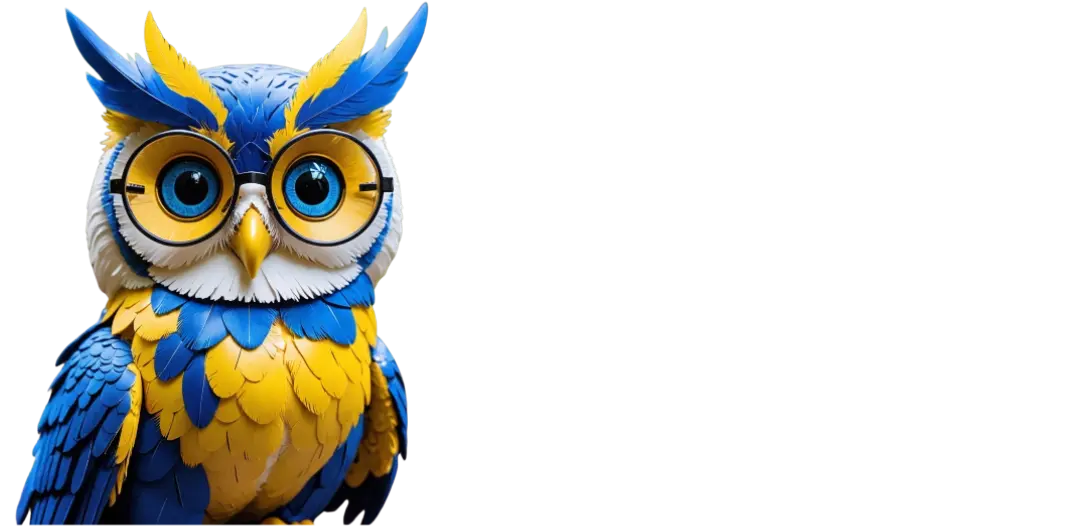Social media has become an essential part of the marketing landscape in today’s digital age. Social media marketing provides numerous opportunities for businesses looking to expand their online presence and connect with their target audience.
Before jumping on the social media bandwagon, business owners must conduct a thorough self-assessment to determine whether social media marketing aligns with their specific goals, target audience, and available resources.
Social media marketing has progressed from a passing fad to a critical component of effective marketing strategies. With billions of active users across multiple platforms, social media provides businesses with unprecedented opportunities to engage with their customers, build brand awareness, drive website traffic, generate leads, and increase sales.
However, not every business can benefit equally from social media marketing. A thorough self-evaluation is essential for making informed decisions and developing a successful social media strategy tailored to your company’s needs.
In this comprehensive guide, we will look at a number of critical questions that will assist business owners in making informed decisions about incorporating social media into their marketing strategies.
We’ll talk about things like industry relevance, competition analysis, and potential return on investment (ROI). In addition, we will discuss social media strategy, social media advertising, Instagram marketing, Facebook ads, Twitter promotion, LinkedIn campaigns, social media analytics, influencer marketing, viral content, and social media engagement.
Defining Your Business Goals
The first step in determining whether social media marketing is right for your company is to identify your specific objectives. Understanding your goals will help you shape your social media strategy and effectively measure the success of your efforts.
Begin by determining the primary goal of your social media presence. Do you want to raise brand awareness and visibility in the online world? Or are you primarily concerned with increasing website traffic in order to increase online sales? Maybe you want to use social media as a lead-generation tool to grow your customer base. Whatever your objectives are, having a clear understanding of what you hope to achieve through social media marketing is critical.
Spend some time brainstorming and establishing concrete and measurable goals. Ensure that your goals are specific, measurable, attainable, relevant, and time-bound in relation to your overall business objectives. Instead of a vague goal like “increase brand awareness,” set a measurable target like “increase brand mentions by 20% in the next six months.”
Identifying Your Target Audience
The world of social media is vast, with each platform catering to different demographics and interests. Analyzing your target audience is essential for determining whether or not they are active on social media and which platforms they prefer. This will allow you to tailor your content to their needs and effectively engage with them.
Begin by developing detailed buyer personas for your intended audience. Learn about their demographics, interests, preferences, problems, and online behavior. This data will assist you in determining which social media platforms your target audience is likely to use and how they interact with content.
Surveys, customer interviews, and social media analytics can all be used to learn more about your target audience. Social media platforms frequently provide audience insights that can assist you in better understanding the demographics and behaviors of your current followers.
Evaluating Industry Relevance
Some industries are naturally suited to social media marketing, while others may find it more difficult to create engaging content. Consider whether your products or services are visually appealing or can be effectively communicated via social media channels.
Visual industries such as fashion, food, travel, and fitness frequently outperform on platforms such as Instagram and Pinterest. Businesses can use these platforms to showcase their products or services by using eye-catching visuals and storytelling.
B2B businesses or industries with complex offerings, on the other hand, may find it more difficult to capture the attention of a social media audience. Even in less visually appealing industries, however, social media can be a useful platform for sharing valuable content, establishing thought leadership, and engaging with potential clients.
Examine how your competitors in the same industry are engaging with their audiences via social media. This will provide you with insights into what works and what doesn’t, as well as assist you in identifying gaps and opportunities in your social media strategy.
Analyzing Competition
A competitive analysis is an important step in understanding how your competitors use social media and what you can learn from their strategies.
Begin by identifying your primary market competitors. Look for businesses that have a similar target audience and offer comparable products or services to yours.
Investigate their social media presence and activities across multiple platforms. Examine the type of content they post, the frequency with which they post, and how they interact with their followers. Take note of the tone of voice they use as well as the overall appearance of their profiles.
Determine their advantages and disadvantages. What are they doing particularly well on social media, and where can you capitalize to differentiate yourself?
Examine the level of engagement with their posts. Is their audience actively engaging with their content? Understanding their level of engagement will assist you in setting reasonable goals for your own social media performance.
Take cues from successful strategies, but avoid directly replicating them. Your social media presence should be consistent with your distinct brand identity and value proposition.
Assessing Available Resources
Consistent effort and dedication are required for social media marketing. When evaluating your resources, consider your team’s expertise, time availability, and budget.
Effective social media management necessitates a well-thought-out strategy as well as daily engagement with your audience. This may necessitate the hiring of a dedicated social media manager or team, depending on the size of your company and the scope of your social media activities.
Consider outsourcing social media management to a reputable agency or freelancer if you have limited in-house resources. Outsourcing can be a cost-effective solution that allows you to benefit from the expertise of social media marketing professionals.
Create a budget for your social media marketing efforts. While some platforms provide organic reach, investing in social media advertising can greatly increase your reach and allow you to target a specific audience. Determine how much money you’re willing to spend on paid social media campaigns.
It is critical to establish expectations regarding the timeframe for seeing results. Social media marketing is a long-term strategy, and it takes time to establish a strong presence and engage with your audience. Be persistent and patient in your efforts.
Understand Social Media Platforms
Each social media platform has its own set of advantages and disadvantages. Understanding the differences between platforms will assist you in determining which ones are best suited to your business objectives and target audience.
Facebook: As the most popular social media platform, with billions of users, Facebook provides a plethora of targeting options for businesses looking to reach a large audience. It is applicable to a wide range of industries and allows for content in a variety of formats, including text, images, videos, and links.
Instagram: Instagram is popular among younger audiences and is ideal for brands that can use visuals to creatively showcase products or services. It is known for its visually appealing and highly engaging content.
Twitter: Twitter’s fast-paced and concise format is ideal for real-time updates, breaking news, and engaging in conversations with followers. It is popular among businesses in industries that require rapid communication, such as news, technology, and entertainment.
LinkedIn: LinkedIn, primarily a professional networking platform, is ideal for B2B companies seeking to establish thought leadership, network with industry peers, and generate leads.
Pinterest is a visual discovery platform that specializes in creative and inspirational content. It is appropriate for businesses that sell visually appealing products, DIY projects, recipes, and travel experiences.
YouTube: As a video-centric platform, YouTube is ideal for brands capable of producing valuable video content. It is appropriate for companies that can provide tutorials, product demonstrations, behind-the-scenes footage, and entertaining videos that are relevant to their target audience.
TikTok is a fast-growing platform known for its short-form videos and viral challenges. It appeals to a younger demographic and is ideal for businesses that can produce engaging and creative content in a short amount of time.
Snapchat: Snapchat is well-known among younger users for its disappearing messages and stories. It is appropriate for companies that want to connect with a younger demographic and provide exclusive content that encourages immediate action.
Clubhouse is a social media platform that only allows for audio conversations and discussions. It is ideal for thought leaders, industry experts, and companies that can provide valuable insights via live audio sessions.
With so many social media platforms to choose from, it’s critical to pick the ones that best match your target audience and content strategy. You don’t have to be present on every platform; instead, concentrate your efforts on the ones where your target audience is most active and engaged.
Exploring Social Media Advertising
Social media advertising can greatly increase your reach and impact. Consider using platforms such as Facebook ads, Instagram marketing, and Twitter promotion to spread your message and drive targeted traffic to your website.
You can target a specific audience using social media advertising based on demographics, interests, behavior, and other factors. This level of targeting ensures that your ads are shown to the appropriate people, increasing the likelihood of conversions.
Image ads, video ads, carousel ads, and sponsored posts are all available on each social media platform. You can select the best ad format for your campaigns based on your content and marketing objectives.
Setting clear objectives and defining key performance indicators (KPIs) to measure the success of your campaigns are critical for getting the most out of social media advertising. Track the performance of your ads on a regular basis and optimize them based on the information gathered.
Leveraging Social Media Analytics
Social media analytics can provide useful information about the performance of your content and campaigns. Are you willing to track key metrics and use data-driven insights to constantly improve your social media strategy?
Each social media platform has analytics tools that provide useful information about your audience, engagement, reach, and impressions. By analyzing these metrics, you can learn which content is most popular with your target audience and tailor your future content accordingly.
Keep track of the number of people who are following you, the engagement rate on your posts, the best-performing content, and the times when your audience is most active on each platform. This information will assist you in strategically scheduling your posts for maximum visibility and engagement.
Keep audience demographics in mind to ensure that your social media efforts reach the right people. If you discover that a specific demographic responds well to your content, consider targeting that demographic in your advertising campaigns.
Evaluating Influencer Marketing Potential
Influencer marketing can be an effective way to reach a larger audience and establish credibility. Examine whether collaborating with influencers is in line with your brand’s image and whether there are influencers in your industry.
Influencers are people who have a large social media following and can influence their audience’s purchasing decisions. Collaboration with influencers allows you to gain access to their loyal followers while also gaining credibility in your niche.
Focus on relevance and authenticity when considering influencer collaborations. Choose influencers whose values are consistent with yours and whose audience is similar to your target demographic. A genuine and authentic partnership is more likely to connect with their target audience and create a favorable brand impression.
Research influencers’ content, engagement rate, and audience demographics before approaching them. Ascertain that their content style and tone are consistent with your brand message and that their target audience is genuinely interested in your products or services.
Creating Viral-Worthy Content
Viral content has the potential to reach a large number of people in a short period of time. Consider whether your brand can produce shareable and engaging content that is relevant to your target audience.
While aiming for viral content is desirable, keep in mind that virality is unpredictable and frequently necessitates an element of surprise or uniqueness. Concentrate on producing content that is useful, informative, entertaining, or emotionally appealing to your target audience.
Experiment with various content formats, such as videos, infographics, memes, and interactive quizzes, to see which ones work best for your audience. Keep track of the popular content and learn from its success.
Run contests, challenges, or giveaways to encourage social sharing and user-generated content. User-generated content increases engagement while also creating a sense of community around your brand.
Fostering Social Media Engagement
Building brand loyalty and advocacy requires active social media engagement with your target audience. Are you prepared to respond to comments, messages, and reviews quickly while maintaining a positive brand image?
Engagement is a two-way street between your brand and your target audience. Respond to comments and messages in a timely and genuine manner. Professionally and courteously respond to customer inquiries, concerns, and feedback.
By liking, sharing, or reposting content created by your followers, you can encourage and appreciate user-generated content. This builds community and encourages others to interact with your brand.
Monitor social media mentions of your brand and respond to both positive and negative feedback. Responding publicly to negative comments or reviews demonstrates that you care about your customers’ experiences and are proactive in resolving issues.
Conclusion
Social media marketing can be a game changer for businesses, but it must be approached with caution and planning. You can determine whether social media marketing aligns with your business goals, target audience, and available resources by conducting a comprehensive self-assessment using the questions provided in this guide.
Defining your business objectives and identifying your target audience are critical first steps in developing your social media strategy. Evaluating the relevance of your industry, analyzing competition, and assessing available resources will help you understand the feasibility and potential impact of social media marketing for your business.
Understanding the various social media platforms and investigating social media advertising can assist you in selecting the best channels for effectively reaching your target audience. Using social media analytics will allow you to track the success of your efforts and make data-driven decisions to continuously improve your strategy.
Consider influencer marketing and creating viral-worthy content to broaden your reach and engagement with your target audience. Finally, encouraging active and authentic social media interactions will increase brand loyalty and advocacy among your followers.
Whether you choose to use social media marketing or other marketing channels, the key is to make informed decisions that will propel your company forward. To stay ahead in the competitive digital world, maintain consistency, adapt to the changing social media landscape, and keep a close eye on your performance metrics.
Take Action Now, and Supercharge Your Online Marketing! 🚀
Ready to take your organization’s marketing to the next level? 🚀 Contact us now to unlock the full potential of online marketing! 🌟 Let’s grow your business, attract more clients, and save money on effective marketing strategies. 💼 Fill out the form here ➡️ https://bit.ly/3p0bBS5 or book a convenient Zoom meeting ➡️ https://bit.ly/3TR3Wn6. 📆 Don’t miss this opportunity to get all your burning questions answered! 🔥 Let’s supercharge your marketing efforts together! 💪





